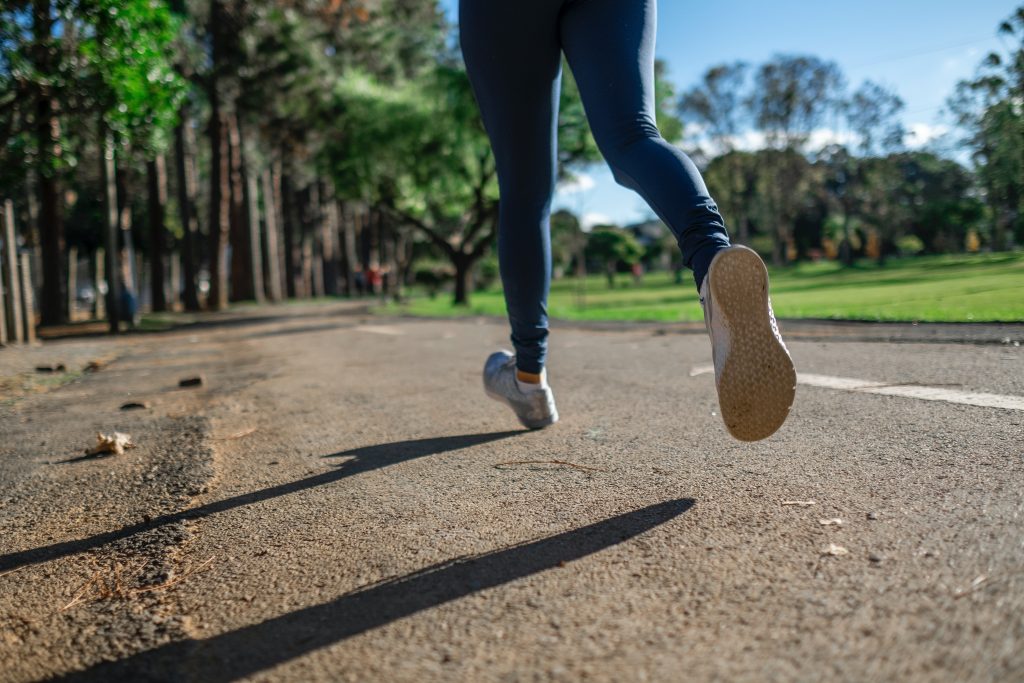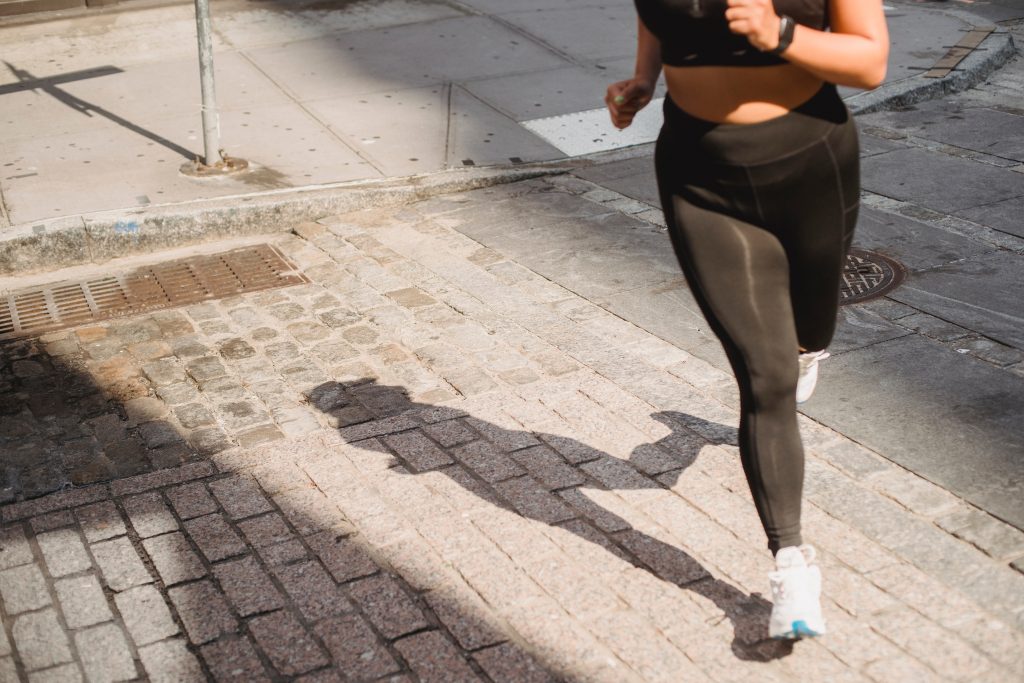

In today’s fast-paced world, where sedentary lifestyles have become the norm, it is crucial to emphasize the importance of physical activity for weight loss. Regular exercise plays a fundamental role in maintaining a healthy weight and improving overall well-being.
Engaging in physical activity like walking to lose weight not only burns calories but also helps to boost metabolism, build lean muscle, and increase cardiovascular fitness.
Numerous studies have shown that incorporating exercise into your weight loss journey can enhance the efficiency of calorie burning and facilitate sustainable weight management.
It is important to note that weight loss is not solely dependent on exercise; a balanced diet also plays a significant role. However, exercise, such as walking, can be a powerful tool to support your weight loss goals and improve your overall health.
Walking as an effective exercise for weight loss

In the quest for weight loss, it’s easy to get caught up in high-intensity workouts and trendy fitness programs. However, it’s important to recognize that not all effective exercises need to be strenuous or demanding. Walking, a simple yet powerful form of exercise, can be a game-changer when it comes to achieving your weight loss goals.
One of the key advantages of walking is its accessibility. Unlike other forms of exercise that may require specialized equipment or gym memberships, walking requires nothing more than a comfortable pair of shoes and a willingness to move.
Whether you choose to walk around your neighborhood, explore local parks, or simply stroll on a treadmill, you have the freedom to make walking a part of your daily routine.
Not only is walking accessible, but it is also a low-impact exercise that puts minimal stress on your joints and muscles. This makes it an excellent choice for individuals who may have physical limitations, joint issues, or are new to exercise. Walking allows you to improve your cardiovascular fitness, burn calories, and shed excess pounds without placing excessive strain on your body.
Another advantage of walking is its versatility. You have the flexibility to adjust the intensity and duration of your walks to suit your fitness level and goals. If you’re just starting out, you can begin with shorter, brisk walks and gradually increase the time and pace as your endurance improves.
Walking can be easily incorporated into your daily activities. You can walk to work, take the stairs instead of the elevator, or even schedule walking meetings with colleagues.
Walking is not just about burning calories and losing weight; it offers a host of additional benefits for your overall well-being. Regular walking has been shown to reduce the risk of chronic diseases such as heart disease, type 2 diabetes, and certain types of cancer. It can also improve bone density, strengthen muscles, and enhance balance and coordination.
One of the most remarkable aspects of walking is its positive impact on mental health. Engaging in a leisurely stroll outdoors can help reduce stress, anxiety, and symptoms of depression. The combination of physical activity, fresh air, and exposure to nature can have a profound effect on your mood, boosting feelings of happiness and well-being.
In the following sections, we will delve deeper into the benefits of walking for weight loss, exploring how it aids in calorie burn, improves cardiovascular health, boosts metabolism, and enhances mental well-being.
We will also discuss practical tips for setting goals, planning your walking routine, and incorporating strength training to maximize the effectiveness of your walking workouts.
So let’s lace up our shoes and embark on a journey towards a healthier, slimmer you with the simplicity and effectiveness of walking!
Benefits of walking to lose weight

Walking offers a myriad of benefits beyond just weight loss. By incorporating regular walks into your routine, you can expect to experience a range of positive effects on your physical and mental health. Firstly, walking promotes cardiovascular health by strengthening your heart and improving blood circulation. This can lead to a reduced risk of heart disease, lower blood pressure, and improved cholesterol levels.
Also, walking helps to increase your metabolism, resulting in a higher calorie burn even at rest. This means that not only will you be burning calories during your walk, but your body will continue to burn more calories throughout the day, aiding in weight loss. Walking also
releases endorphins, the “feel-good” hormones, which can alleviate stress, boost mood, and improve overall mental well-being.
In the upcoming sections, we will delve deeper into the specific benefits of walking for weight loss, including its impact on calorie burn, cardiovascular health, metabolism, and mental health.
We will also explore how to set achievable goals, create a walking routine that suits your needs, and incorporate additional elements such as strength training to enhance your weight loss journey. So lace up your shoes and get ready to step into a healthier, fitter you through the power of walking!
Basics of weight loss: calories in vs. calories out

When it comes to weight loss, the fundamental principle revolves around the concept of calories in versus calories out. This means that in order to lose weight, you need to create an energy deficit by burning more calories than you consume. The energy we obtain from food is measured in calories, and our bodies burn calories through various activities, including exercise, digestion, and simply functioning at rest.
To achieve weight loss, it is crucial to understand the concept of energy balance. If you consistently consume more calories than you burn, your body will store the excess energy as fat, leading to weight gain. Conversely, if you consistently burn more calories than you consume, your body will tap into its fat stores for energy, resulting in weight loss.
Creating a calorie deficit can be achieved through a combination of diet and exercise. By consuming a balanced and nutritious diet that provides the necessary nutrients while restricting excessive calorie intake, you lay the foundation for weight loss.
Complementing your dietary efforts with regular physical activity, such as walking, enhances your calorie burn and accelerates your progress towards weight loss goals.
The role of exercise in weight loss

Exercise plays a vital role in weight loss by increasing the total number of calories burned and aiding in the maintenance of lean muscle mass. When you engage in physical activity, your body requires energy to fuel the movement. This energy is obtained from the breakdown of carbohydrates, fats, and proteins.
Regular exercise, including walking, boosts your overall energy expenditure by increasing the number of calories your body burns. Not only do you burn calories during the exercise itself, but the effects can extend beyond the workout session.
Exercise stimulates your metabolism, causing it to remain elevated even after you’ve finished exercising. This means that you continue to burn calories at a higher rate, leading to increased weight loss over time.
In addition to the calorie-burning benefits, exercise helps to preserve and build lean muscle mass. Muscle tissue is more metabolically active than fat tissue, meaning that it burns more calories even at rest. By incorporating exercise into your weight loss journey, you can prevent muscle loss and maintain a higher metabolic rate, making it easier to achieve and sustain your desired weight.
Comparison of walking to other forms of exercise for weight loss
When considering different forms of exercise for weight loss, walking often stands out as a practical and effective option. While high-intensity workouts and vigorous cardio exercises certainly have their place, walking offers several unique advantages.
Firstly, walking is a low-impact exercise that is gentle on the joints, making it suitable for individuals of all fitness levels and ages. It reduces the risk of injury, making it a sustainable long-term exercise option. This is particularly beneficial for those who may have physical limitations or conditions that prevent them from engaging in high-impact activities.

Walking is a readily accessible form of exercise that can be easily incorporated into daily routines. Whether you choose to walk outdoors, on a treadmill, or even inside your home, you have the freedom to customize your walking routine based on your preferences and availability. This makes it a convenient option for those with busy schedules or limited access to fitness facilities.
Compared to more intense exercises, walking may burn fewer calories per unit of time. However, what makes walking an excellent choice for weight loss is its sustainability and ability to be integrated into a balanced lifestyle. Unlike rigorous workouts that may lead to burnout or excessive strain on the body, walking allows for consistent, long-term engagement without overwhelming physical stress.
Furthermore, walking has the advantage of being a social activity. You can walk with friends, family, or join walking groups, making it an enjoyable and socially rewarding experience. This can further contribute to motivation and adherence to your weight loss journey
Why Walking?
1. Accessibility and convenience of walking
One of the greatest advantages of walking as an exercise for weight loss is its accessibility and convenience. Unlike many other forms of exercise, walking requires minimal equipment and can be done virtually anywhere. Whether you live in a bustling city or a quiet rural area, you can easily step out your front door and start walking. You don’t need access to a gym or specialized facilities, making it a cost-effective option as well.
Furthermore, walking can be seamlessly integrated into your daily routine. You can incorporate walking into your commute by opting to walk or cycle instead of driving or taking public transportation.
You can also take advantage of breaks at work or lunch hours to go for a brisk walk. This flexibility allows you to fit walking into your schedule without major disruptions, making it easier to establish a consistent exercise habit.
2. Low-impact nature of walking and reduced risk of injury
Walking is a low-impact exercise, meaning that it puts minimal stress on your joints and muscles. This makes it an excellent choice for individuals who may be recovering from an injury, suffer from joint pain, or have conditions that limit their ability to engage in high-impact activities. The repetitive motion of walking is gentle on the body, reducing the risk of strain or injury.
Compared to activities such as running or high-intensity workouts, which can place significant impact on the joints, walking allows you to engage in regular exercise without putting excessive stress on your knees, hips, or ankles. This makes it a suitable option for individuals of all fitness levels, including those who are new to exercise or have underlying health conditions.

3. Suitable for all fitness levels and ages
Walking is a form of exercise that is accessible and adaptable to people of all fitness levels and ages. Whether you’re a seasoned athlete or a beginner taking your first steps towards a more active lifestyle, walking can be customized to meet your specific needs and capabilities. You can start at a comfortable pace and gradually increase the intensity as your fitness level improves.
For individuals who have been leading sedentary lifestyles or have been inactive for a long time, walking serves as an ideal starting point to initiate physical activity.
It provides a gentle introduction to exercise, allowing your body to gradually adjust and build endurance. As your fitness improves, you can incorporate more challenging elements into your walking routine, such as inclines or speed intervals, to further enhance the benefits.
Also, walking is an exercise option that transcends age boundaries. From young children to older adults, walking offers numerous benefits for overall health and well-being. It can help children develop healthy habits and improve their cardiovascular fitness, while for older adults, it supports mobility, joint health, and cognitive function.
4. Versatility of walking in terms of time and intensity
One of the remarkable features of walking is its versatility. Walking allows you to customize your workouts based on both time and intensity. Whether you have 10 minutes or an hour to spare, you can still engage in a beneficial walking session. Even shorter bouts of walking can contribute to your daily calorie burn and overall fitness.
Moreover, the intensity of your walks can be easily adjusted to suit your goals and current fitness level. You can choose to go for a leisurely stroll to enjoy the scenery and clear your mind, or you can opt for a brisk walk to elevate your heart rate and increase calorie burn. Incorporating intervals, where you alternate between a moderate pace and a faster pace, can further enhance the intensity and fat-burning potential of your walks.
The versatility of walking allows you to customize your workouts based on your time availability, preferences, and goals. Whether you’re looking for a short, gentle walk to relax and unwind or a more challenging, time-efficient workout, walking can be tailored to suit your specific needs.
Basically, walking stands out as an ideal exercise option for weight loss due to its accessibility, convenience, low-impact nature, suitability for all fitness levels and ages, and versatility in terms of time and intensity.
By incorporating regular walks into your routine, you can embark on a sustainable and enjoyable journey towards achieving your weight loss goals while improving your overall health and well-being.
Benefits of Walking for Weight Loss
1. Increased calorie burn and fat loss through walking
Walking is a fantastic way to burn calories and promote fat loss. As a weight-bearing exercise, it engages multiple muscle groups and increases your heart rate, leading to an increased energy expenditure. The number of calories burned during a walk depends on various factors such as your weight, pace, and duration of the walk.
To maximize calorie burn, aim for a brisk pace that elevates your heart rate and makes you break a sweat. This intensity level can vary from person to person, but a general guideline is to walk at a pace that allows you to carry on a conversation but still feel moderately challenged. By maintaining this intensity, you can significantly increase your calorie burn during the walk itself.
In addition to burning calories during the walk, walking also has the potential to promote fat loss. As you engage in moderate-intensity aerobic exercise like walking, your body primarily utilizes stored fat as a fuel source. This means that with consistent walking, you can gradually reduce your body fat percentage and achieve a leaner physique.
2. Improvement in cardiovascular health
Regular walking contributes to improved cardiovascular health, benefiting your heart and circulatory system. As you walk, your heart rate increases, promoting blood circulation and enhancing the efficiency of your cardiovascular system. This can lead to a reduced risk of heart disease, lower blood pressure, and improved cholesterol levels.
Walking strengthens your heart muscle, making it more efficient at pumping blood and delivering oxygen to your body’s tissues. This increased efficiency allows your heart to work more effectively during physical exertion and at rest. Over time, this can lead to improved cardiovascular endurance and overall heart health.

3. Boosting metabolism and increasing energy expenditure
Walking has a positive impact on your metabolism, which plays a crucial role in weight loss. Regular walking helps to increase your metabolic rate, meaning that your body burns calories at a higher rate even when you’re not exercising. This effect, known as the afterburn or excess post-exercise oxygen consumption (EPOC), can last for hours after your walk.
By boosting your metabolism, walking helps you achieve a greater calorie burn throughout the day. This is particularly beneficial for weight loss as it allows you to create a larger calorie deficit. As a result, your body taps into its fat stores to provide the energy needed to sustain your increased metabolic rate, facilitating fat loss.
4. Mental health benefits and stress reduction through walking
Engaging in regular walking can have profound effects on your mental well-being. Walking releases endorphins, the body’s natural “feel-good” hormones, which can improve mood, reduce stress, and alleviate symptoms of anxiety and depression. It serves as a form of stress relief and allows you to unwind and clear your mind.
Walking outdoors, especially in natural environments such as parks or trails, provides an additional boost to your mental health. Exposure to nature has been shown to have a calming effect on the mind, reduce feelings of fatigue, and enhance overall well-being. It can help reduce mental fatigue and enhance cognitive function, allowing you to feel refreshed and rejuvenated.
Moreover, walking can be a social activity, allowing you to connect with others and combat feelings of isolation or loneliness. Whether you choose to walk with friends, join walking groups, or simply strike up conversations with fellow walkers along the way, the social aspect of walking can provide a sense of belonging and support.
Basically, walking offers a multitude of benefits for weight loss. It increases calorie burn, promotes fat loss, improves cardiovascular health, boosts metabolism, and contributes to mental well-being.
By incorporating regular walks into your routine, you can enjoy the physical, mental, and emotional advantages of this simple yet powerful exercise, ultimately leading to successful and sustainable weight loss.
Setting Goals and Planning Your Walking Routine
How to set realistic weight loss goals
Setting realistic weight loss goals is essential for long-term success and motivation. When it comes to weight loss, it’s important to focus on gradual and sustainable progress rather than striving for quick fixes or drastic changes. Aim to lose 1-2 pounds per week, which is considered a healthy and achievable rate of weight loss.
Start by assessing your current weight and determining your desired weight or target range. Consider factors such as your body composition, height, and overall health. Consult with a healthcare professional or a registered dietitian to help you set realistic goals based on your specific needs and circumstances.
Remember that weight loss is not solely about the number on the scale. It’s important to focus on overall health and body composition rather than solely chasing a specific weight goal. Set goals that incorporate other measures of progress, such as improvements in fitness levels, increased energy, or fitting into certain clothing sizes.
Determining the frequency, duration, and intensity of walks
To create an effective walking routine, consider the frequency, duration, and intensity of your walks. The American Heart Association recommends aiming for at least 150 minutes of moderate-intensity aerobic activity per week, which can be achieved through walking.
Begin by establishing a baseline and gradually increasing your walking time and intensity. If you’re just starting out, aim for 3-4 days of walking per week. Each session should last around 30 minutes. As your fitness level improves, gradually increase the frequency to 5-7 days per week.
In terms of intensity, strive to maintain a brisk pace that elevates your heart rate. This can be achieved by swinging your arms, walking with purpose, and taking longer strides. If you have a fitness tracker or a heart rate monitor, aim to stay within your target heart rate zone, which is typically around 50-70% of your maximum heart rate.
You can also consider incorporating interval training into your walks. This involves alternating between periods of brisk walking and periods of faster-paced walking or jogging. Interval training can help increase calorie burn, improve cardiovascular fitness, and add variety to your routine.
Incorporating variety into your walking routine
To keep your walking routine enjoyable and prevent boredom, it’s important to incorporate variety. There are several ways you can add variety to your walks:
- Change your routes: Explore different neighborhoods, parks, or trails in your area. This not only adds excitement but also exposes you to new surroundings and scenery.
- Increase distance and duration: Gradually increase the distance and duration of your walks as your fitness level improves. Set mini-milestones and celebrate your achievements along the way.
- Mix up the terrain: Vary the terrain of your walks by incorporating hills or inclines. Walking uphill challenges your muscles and increases the intensity of your workout.
- Walk with a buddy: Invite a friend, family member, or even a furry companion to join you on your walks. Not only does this provide companionship, but it also keeps you accountable and motivated.
- Incorporate strength exercises: Integrate bodyweight exercises like lunges, squats, or push-ups into your walking routine. This helps to engage additional muscle groups and adds resistance training benefits.
Tips for staying motivated and accountable
Staying motivated and accountable is crucial for maintaining a consistent walking routine. Here are some tips to help you stay on track:
- Set specific goals: Establish specific goals for each week or month. For example, aim to increase your walking duration by 5 minutes or complete a certain number of steps per day. Having clear goals gives you something to work towards.
- Track your progress: Keep a record of your walks, including the distance, duration, and any notable achievements. Use a fitness app, pedometer, or a journal to track your progress. Seeing your accomplishments can boost motivation and provide a sense of accomplishment.
- Find a walking buddy or join a group: Walking with a partner or joining a walking group can provide support, accountability, and make your walks more enjoyable. You can motivate and inspire each other along the way.
- Reward yourself: Set up a reward system for reaching milestones or achieving your goals. Treat yourself to something you enjoy, like a massage, a new workout outfit, or a relaxing day off.
- Stay consistent: Make walking a non-negotiable part of your routine. Schedule your walks in advance, just like any other appointment, and commit to sticking to them. Consistency is key to seeing long-term results.
Remember to listen to your body, stay hydrated, and wear appropriate footwear and clothing during your walks. With dedication, planning, and a positive mindset, you can create a walking routine that supports your weight loss goals and leads to a healthier and more active lifestyle.
Walking Techniques and Form

Correct posture and body alignment for efficient walking
Maintaining correct posture and body alignment is crucial for efficient and effective walking. Follow these tips to ensure proper form:
- Stand tall: Keep your head up, shoulders relaxed, and spine straight. Avoid slouching or leaning forward, as this can strain your neck and back.
- Engage your core: Activate your abdominal muscles by gently pulling your belly button towards your spine. This helps stabilize your torso and promotes better balance.
- Swing your arms: Bend your elbows at a 90-degree angle and let your arms swing naturally as you walk. This provides momentum and helps maintain a rhythmic stride.
- Land softly: Aim to land on your heels and roll through the ball of your foot to push off with your toes. This promotes a smoother and more efficient walking motion.
Tips for proper walking technique to maximize calorie burn
To maximize calorie burn and engage more muscles, focus on these walking techniques:
- Increase your stride: Take longer strides to engage your glutes and hamstrings. Push off with each step, propelling yourself forward and maintaining a brisk pace.
- Increase arm movement: Swing your arms vigorously to increase the intensity of your walk. This helps burn more calories and engages your upper body.
- Maintain a consistent pace: Aim to maintain a steady, brisk pace throughout your walk. Avoid slowing down or stopping frequently, as it can interrupt the calorie-burning process.
- Focus on your breathing: Breathe deeply and rhythmically, inhaling through your nose and exhaling through your mouth. This helps provide oxygen to your muscles and enhances endurance.
Incorporating intervals and inclines for increased intensity
To add variety and increase the intensity of your walking routine, consider incorporating intervals and inclines:
- Interval training: Alternate between periods of brisk walking and faster-paced walking or jogging. For example, walk at a moderate pace for 3 minutes, then increase your speed for 1 minute. Repeat this pattern throughout your walk. Interval training boosts calorie burn and improves cardiovascular fitness.
- Hill or incline walking: Find routes that include hills or inclines to challenge your leg muscles and increase the intensity of your walk. Walking uphill engages your glutes, quadriceps, and calf muscles, resulting in a higher calorie burn.
- Stair climbing: If you have access to stairs, incorporate stair climbing into your walking routine. Climbing stairs activates different muscle groups and adds a cardiovascular challenge.
- Walking lunges: Integrate walking lunges into your walk to further engage your leg muscles. Take a step forward, lower your body into a lunge position, push off with your front foot, and repeat with the other leg.
Remember to warm up before incorporating high-intensity intervals or inclines into your walks, and cool down afterward with some gentle stretching. Gradually increase the intensity and duration of these challenging elements to avoid overexertion or injury.
By implementing these walking techniques and form tips, you can make your walks more effective, burn more calories, and engage a broader range of muscles.
Tracking Progress and Making Adjustments
The importance of tracking your walking progress
Tracking your walking progress is crucial for several reasons. Firstly, it allows you to monitor your consistency and adherence to your walking routine. By recording your walks, you can ensure that you’re meeting your frequency and duration goals. This helps maintain accountability and provides a sense of accomplishment as you see your progress over time.
Tracking your walking progress also allows you to evaluate the effectiveness of your routine. By keeping a record of the distance, duration, and intensity of your walks, you can analyze trends and identify areas where you may need to make adjustments.
Tracking progress helps you stay motivated and allows you to celebrate milestones along your weight loss journey.
Utilizing technology and apps for tracking steps and calories
In the digital age, technology can be a valuable tool for tracking your walking progress. Numerous apps, fitness trackers, and pedometers are available to help you monitor your steps, distance, and calories burned. Here’s how you can make the most of these tools:
- Fitness trackers: Wearable devices like fitness watches or smart bracelets can accurately track your steps, distance, and heart rate. They provide real-time data, allowing you to monitor your progress during your walks and track your overall activity level throughout the day.
- Smartphone apps: Many smartphone apps are specifically designed for tracking walking and other forms of physical activity. These apps use your phone’s built-in accelerometer or GPS to measure your steps, distance, and pace. Some apps also provide features like route mapping, customized workouts, and challenges to keep you engaged.
- Online platforms: Online platforms like MyFitnessPal, Fitbit, or Google Fit offer comprehensive tracking capabilities. They allow you to log your walks, track your calorie intake, and monitor your progress over time. These platforms often provide additional resources such as nutrition guidance and community support.
Utilizing technology for tracking not only provides accurate data but also adds a layer of motivation and engagement to your walking routine. Seeing your steps accumulate and calories burned can be incredibly motivating, encouraging you to push further and achieve more.
Making adjustments to your walking routine for continued progress
As you progress in your walking routine, it’s important to periodically assess your progress and make adjustments to continue challenging your body and achieving results. Here are some factors to consider when making adjustments:
- Gradual increases: Gradually increase the duration or intensity of your walks to avoid plateauing. This progressive overload challenges your body and helps you continue to burn calories and improve fitness. For example, you can add an extra 5 minutes to your walk or incorporate more intervals or inclines.
- Vary your routes: Exploring different routes and terrains keeps your walks interesting and prevents boredom. It also challenges your muscles in new ways and can boost calorie burn. Look for scenic trails, parks, or neighborhoods that offer a change of scenery.
- Incorporate strength training: Including strength exercises in your routine helps build lean muscle mass, which in turn boosts your metabolism and enhances weight loss. Consider integrating bodyweight exercises like squats, lunges, or push-ups into your walking routine or engage in separate strength training sessions.
- Monitor and adjust intensity: Pay attention to how your body responds to your walks. If you find that your walks are becoming too easy, consider increasing your pace or incorporating more challenging intervals. On the other hand, if you experience pain or excessive fatigue, it may be a sign to dial back the intensity and allow for proper recovery.
- Seek professional guidance: If you’re unsure about how to make adjustments or need personalized advice, consult with a certified personal trainer or a healthcare professional. They can assess your current routine, provide tailored recommendations, and help you optimize your walking program for weight loss.
Overcoming Challenges and Staying Motivated
Dealing with weather-related obstacles
Weather can present challenges when it comes to maintaining a consistent walking routine, but with a bit of planning and flexibility, you can overcome these obstacles. Here’s how:
- Plan ahead: Check the weather forecast in advance to anticipate any potential weather-related obstacles. If you know a storm is coming, try to adjust your walking schedule accordingly.
- Dress appropriately: Invest in proper gear for various weather conditions. Layer your clothing to adjust for temperature changes, wear moisture-wicking fabrics to keep you dry, and don’t forget essentials like a waterproof jacket or a hat to protect against rain.
- Seek indoor alternatives: When weather conditions are unfavorable, explore indoor options for walking. Consider walking in shopping malls, indoor tracks, or using a treadmill if you have access to one. These alternatives allow you to continue your walking routine while staying protected from the elements.
- Embrace the elements: If it’s safe to do so, embrace outdoor walking in different weather conditions. Walking in light rain or snow can provide a refreshing change of scenery and a unique experience. Just ensure you take appropriate precautions to stay safe and comfortable.
Overcoming plateaus and adjusting your routine
Plateaus are a common challenge during any weight loss journey, including walking for weight loss. To overcome plateaus and keep making progress, consider the following strategies:
- Increase intensity: Gradually increase the intensity of your walks by adding more challenging intervals, increasing your pace, or incorporating more hills or inclines. This can help break through a weight loss plateau and stimulate your body to burn more calories.
- Vary your routine: Introduce new elements to your walking routine to keep your body guessing. Try different routes, change the duration or frequency of your walks, or experiment with new walking techniques. Adding variety can stimulate your muscles and prevent them from adapting to the same routine.
- Cross-training: Supplement your walking routine with other forms of exercise. Incorporating activities like swimming, cycling, or strength training engages different muscle groups and can boost your overall fitness. Cross-training helps prevent boredom and provides a well-rounded approach to weight loss.
- Monitor your nutrition: Plateaus may be a sign that your calorie intake needs adjustment. Re-evaluate your nutrition and ensure you’re fueling your body with balanced meals and snacks that support your weight loss goals. Consider consulting with a registered dietitian for personalized guidance.
Finding motivation through goal setting and rewards
Setting goals and rewarding yourself along the way can be powerful motivators to stay on track with your walking routine. Here’s how to stay motivated:
- Set specific goals: Establish both short-term and long-term goals related to your walking routine. Make them specific, measurable, attainable, relevant, and time-bound (SMART goals). For example, aim to walk a certain distance, increase your pace, or participate in a walking event within a specific timeframe.
- Break it down: Divide your long-term goals into smaller, achievable milestones. Celebrate each milestone reached, whether it’s completing a certain number of steps, walking consistently for a specific duration, or achieving a personal best in terms of distance.
- Reward yourself: Treat yourself when you reach your goals or milestones. Rewards can be non-food related, such as buying yourself a new workout outfit, treating yourself to a spa day, or taking a day off to relax. Choose rewards that align with your overall health and wellness goals.
- Find a support system: Surround yourself with supportive friends, family, or a walking group. Share your goals and progress with them, and they can provide encouragement, accountability, and celebrate your achievements with you.
- Track your progress visually: Create a visual representation of your progress, such as a chart, a graph, or a vision board. Seeing your progress visually can be highly motivating and remind you of how far you’ve come.
- Mix up your playlist or audiobooks: Keep yourself entertained during your walks by curating a motivating playlist or listening to audiobooks or podcasts that inspire and uplift you. Engaging content can make your walks more enjoyable and keep your mind occupied.
Remember that motivation may ebb and flow throughout your journey. During challenging times, revisit your goals, reflect on your progress, and remind yourself of the reasons why you started. With perseverance, determination, and a positive mindset, you can overcome obstacles, break through plateaus, and stay motivated on your walking journey towards weight loss success.

Conclusion
In conclusion, walking is an incredible exercise for weight loss that offers numerous benefits for both your physical and mental well-being. Throughout this article, we have explored the importance of physical activity for weight loss and introduced walking as an effective exercise option.
We have delved into the various benefits of walking, including increased calorie burn and fat loss, improved cardiovascular health, boosted metabolism, and enhanced mental well-being.
Walking stands out as an accessible and convenient form of exercise that can be enjoyed by individuals of all fitness levels and ages. Its low-impact nature reduces the risk of injury, making it a safe option for those seeking a gentle yet effective way to shed unwanted pounds. The versatility of walking allows for flexibility in terms of time and intensity, making it easy to incorporate into your daily routine.
Understanding the basics of weight loss, the role of exercise, and how walking compares to other forms of exercise has provided valuable insights into the effectiveness of walking for weight loss. By understanding the principles of calories in vs. calories out, you can appreciate the impact that walking has on creating a calorie deficit, leading to sustainable weight loss.
We have also discussed the importance of setting realistic weight loss goals, determining the frequency, duration, and intensity of your walks, incorporating variety into your walking routine, and staying motivated and accountable. These factors play a crucial role in ensuring your success on the journey to weight loss through walking.
Overcoming challenges such as weather-related obstacles, plateaus, and staying motivated can be overcome with careful planning, adjustments to your routine, and finding inspiration through goal setting and rewards. By tracking your progress, utilizing technology, making adjustments, and seeking support, you can stay on track and achieve your weight loss goals.
Now is the time to take the first steps towards a healthier lifestyle. Lace up your shoes, step outside, and embark on your walking journey with confidence. Remember that every step counts and each walk brings you closer to your goals. Embrace the benefits of walking, not just for weight loss, but for overall health and well-being.
In your pursuit of a healthier lifestyle, always believe in yourself and your ability to make positive changes. Stay committed, stay motivated, and know that the journey may have ups and downs, but the results will be worth it. Take inspiration from the progress you’ve made, the milestones you’ve achieved, and the transformative power of walking.
Frequently Asked Questions
Walking is a great way to lose weight. It doesn’t require any special equipment and can be done almost anywhere. Plus, it’s low-impact, so it’s easier on your joints than running or other high-intensity workouts.
To maximize the benefits of walking for weight loss, aim for 10,000 steps per day. You can track this with a fitness tracker or smartphone app. While you may not reach 10,000 steps right away, gradually increase your daily step count over time until you reach that goal.
In addition to walking, make sure to incorporate strength training into your routine two to three times a week. This will help build muscle and burn more calories throughout the day. Eating a balanced diet full of whole foods is also key for successful weight loss.
A flat tummy walk is a form of exercise that helps to tone the abdominal muscles and reduce belly fat. It involves walking slowly, with your back straight and your stomach pulled in. This type of walking targets the core muscles in the abdomen, helping to strengthen them and create a flatter stomach over time.
The flat tummy walk can be done anywhere, including indoors or outdoors. To do this exercise properly, it’s important to keep your back straight while you walk and focus on pulling your stomach in towards your spine as you move forward. You should also take small steps and hold each step for a few seconds before moving on to the next one.
Doing this type of exercise regularly can help you achieve a flatter stomach over time.
In addition to being an effective way to tone the abdominal muscles, the flat tummy walk can also help improve overall posture and balance.
The most effective way to burn fat quickly is to combine a healthy diet with regular exercise. Eating a balanced diet that is low in refined carbohydrates and high in lean proteins, fruits, and vegetables will help you lose weight and reduce body fat. Also, engaging in aerobic exercises such as running or cycling can help you burn calories quickly.
Strength training is also important for burning fat as it helps build muscle which increases the body’s metabolism.
It is important to remember that no single exercise or food will magically burn fat. You need to combine a healthy diet with regular exercise and an overall healthy lifestyle in order to see results.
It is also important to be consistent with your routine in order for it to be effective. Lastly, make sure you are getting enough rest so that your body has time to recover from the physical activity and repair itself.
Walking for an hour each day can have a number of beneficial effects on your health. Regular physical activity has been linked to improved heart health, weight loss, and increased energy levels. Additionally, walking can help reduce stress and improve mental wellbeing.
By walking for an hour each day, you can also increase your endurance and stamina over time.
This will help you become more physically active in other areas of life such as sports or running. Furthermore, walking is a low impact exercise that is easy on the joints, making it suitable for people of all ages and fitness levels.
Finally, walking for an hour each day can be a great way to explore your surroundings and get some fresh air. Whether you’re taking a stroll through the park or exploring new neighborhoods, getting out and about can be an enjoyable way to spend some time while also improving your physical health.
Can walking reduce thigh fat?
Yes, walking can reduce thigh fat. Walking is a great low-impact exercise that can help you burn calories and reduce body fat. When combined with a healthy diet, it can be an effective way to slim down your thighs.
To maximize the effects of walking for reducing thigh fat, try to walk for at least 30 minutes every day. This will help you burn more calories and create a calorie deficit which can lead to weight loss over time. Additionally, adding some incline or hill walking into your routine can help target your thighs even more effectively.
Finally, make sure to stretch after your walks in order to prevent injury and keep your muscles loose and flexible. With consistent effort and dedication, you should start to see results soon!
How long should I walk to lose 1 kg?
The amount of time you need to walk to lose 1 kg depends on a variety of factors, such as your current weight, body composition, and the intensity of your walking. Generally speaking, it is recommended to aim for at least 150 minutes of moderate-intensity aerobic activity per week in order to lose weight. This could be broken down into 30 minutes of walking 5 days a week.
If you are able to increase the intensity or duration of your walks, then you may be able to reduce this time frame. In addition to walking, it is important to consider other lifestyle factors that can contribute to weight loss such as diet and stress levels.
Eating a balanced diet with adequate protein and fiber will help you feel fuller for longer and can also help regulate blood sugar levels. Reducing stress levels can also help promote weight loss by reducing cortisol levels which can cause an increase in appetite.
Should you walk before or after you eat?
It is generally recommended to walk after you eat. Walking before eating can cause your body to burn off the calories that you are about to consume, which can lead to feeling unsatisfied and hungry soon after the meal. Also, walking on a full stomach can be uncomfortable and may cause digestive issues such as indigestion or heartburn.
On the other hand, walking after a meal can help your body better digest and absorb the nutrients from the food. This type of exercise can also reduce bloating and improve circulation throughout your body. Furthermore, it can help promote feelings of relaxation and satisfaction after eating, rather than feelings of guilt or discomfort.
In general, it is best to wait at least 30 minutes after eating before going for a walk in order to give your body enough time to digest the food properly.
Is walking better than running for weight loss?
Walking is a great form of exercise for weight loss. It can help you burn calories, build muscle, and improve your overall health. The key to successful weight loss is to create an exercise program that fits your lifestyle and goals. Walking is a low-impact activity that can be done almost anywhere and at any time.
It’s also easy to fit into other activities like grocery shopping or running errands. Plus, the slower pace of walking makes it easier to stay motivated and keep going for longer periods of time than with more intense forms of exercise like running.
That said, running can be beneficial for weight loss as well. Running burns more calories per minute than walking, so it can help you reach your goals faster if you have the time and energy to dedicate to it. Running also has other health benefits such as improving cardiovascular fitness and strengthening bones and muscles.
Ultimately, the best type of exercise for weight loss depends on your individual needs and preferences.
Related articles
ddddddddddddddddddddddddddddddddddddddddddddddddddddddddddddddddddddd30 Healthy lunch ideas for kids
How To Make Salads Ahead Of Time For A Stress-Free Lunch
Natural Remedies for Stress and Anxiety: Finding Calm in the Chaos
Chicken Protein Breakdown: Calories and Macros of Every Cut in Detail
Health Benefits of Onion Consumption
Is Eating Canned Chicken Safe? Find Out How It Alters Your Body
6 Natural Remedies for Digestive Issues: Find Relief Naturally
Best 31 Healthy Restaurants in America | Locations
